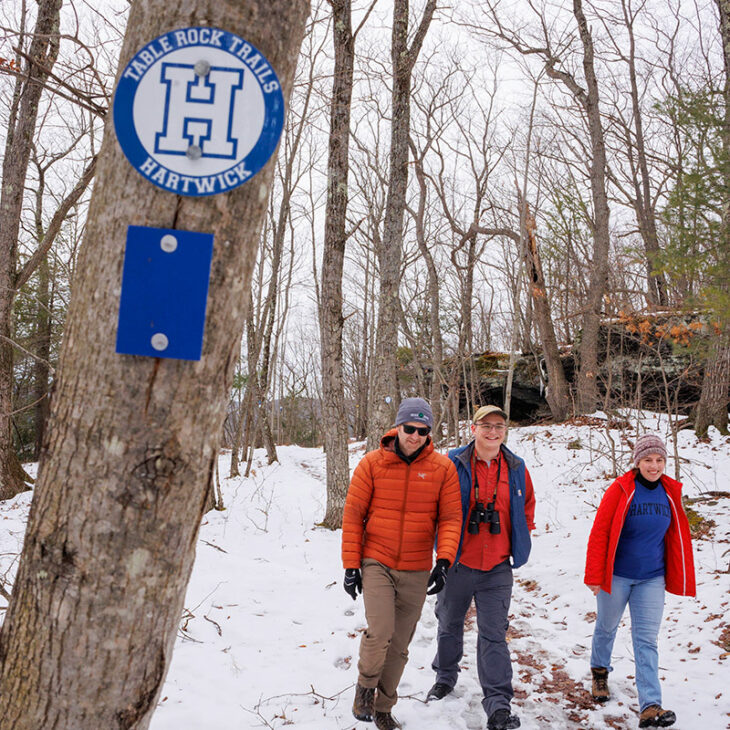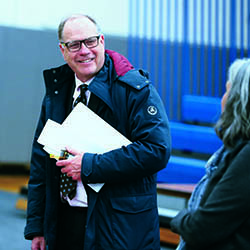Preserving Table Rock For Today. For Tomorrow.
by Libby Cudmore
“It’s a rite of passage for students to hike to Table Rock,” he explained, “but a lot only go up to the Table Rock overlook. They don’t always know there are more trails beyond the outlook.”
Hikers going off-trail – forming undesignated trails – have caused considerable trail degradation that threatens to make the trails unusable if they aren’t properly maintained.
“It’s about stewardship,” Sanford advised. “If people keep making their own paths, the forest will become degraded.”
Marking the trails is just the first step. Students will assist him in building a more obvious trailhead, including a trail register and map, and the Hartwick College Trails Committee (formed in 2018 to maintain and promote the trail system) is working on a maintenance plan to benefit the forest.
“It will be more welcoming, a place we can market to the community,” he assured. “We’re already hearing from people, especially new hikers, that they feel safer walking those trails because they know they won’t get lost.”
The forest and trails have become an integral part of Sanford’s teaching. Over J Term, he and Tanner co-taught a FlightPath course that utilized the trails and certified students in CPR and wilderness first aid.
“After the Wilderness First Aid class, we went hiking to Mud Lake,” Sanford said, “but what they didn’t know was that we had sent people up there ahead of time to pretend they were injured.”
Students coming across an “injured” hiker had to practice rendering first aid.
“There was one man who sprained his ankle, so we had to examine him and make a splint,” said Jack McGee ’26, a nursing major. “Then, further up the trail, we found an elderly couple. He was fine…just had some anxiety, but that was a red herring – and we realized the woman was about to have a heart attack. We had to build a shelter to keep them out of the cold.”
“Coming across the hikers startled them a little at first,” Sanford recalled, “but then they got into it.”
In addition to safe, sustainable hiking practices, the course covered basic orienteering and “Leave No Trace” principles, as well as the history of the Catskill Mountains. At the end of the class, students gave presentations on what they took from the course.
More than just great exercise and course credit, taking advantage of Table Rock’s beauty and being in nature is a way to sustain good mental health.
“The Japanese call it, ‘Shinrin Yoku,’ or ‘forest bathing,’” Sanford instructed. “Unplugging and getting in touch with nature improves mood and reduces stress levels.”
Take a virtual moment of peace on Oyaron Hill
Hiking Tips from Matt Sanford
- Follow the “Leave No Trace” principles. Have respect for the trail and other hikers.
- Spend time planning and preparing. Check weather and trail conditions.
- Pick a hike that matches your ability.
- Wear appropriate clothing.
- Tell someone where you’re going and how long you’ll be hiking.
- Pace yourself!
Pack the 10 essentials:
- A map or compass.
- A waterproof/weatherproof jacket, gloves, socks and hat.
- A flashlight and extra batteries.
- A first aid kit.
- An emergency kit with a whistle, signal mirror, duct tape and multi-tool.
- Matches in a waterproof container.
- Protein bars.
- Water.
- Sunscreen and bug spray.
- A blanket or tent for emergency shelter.


